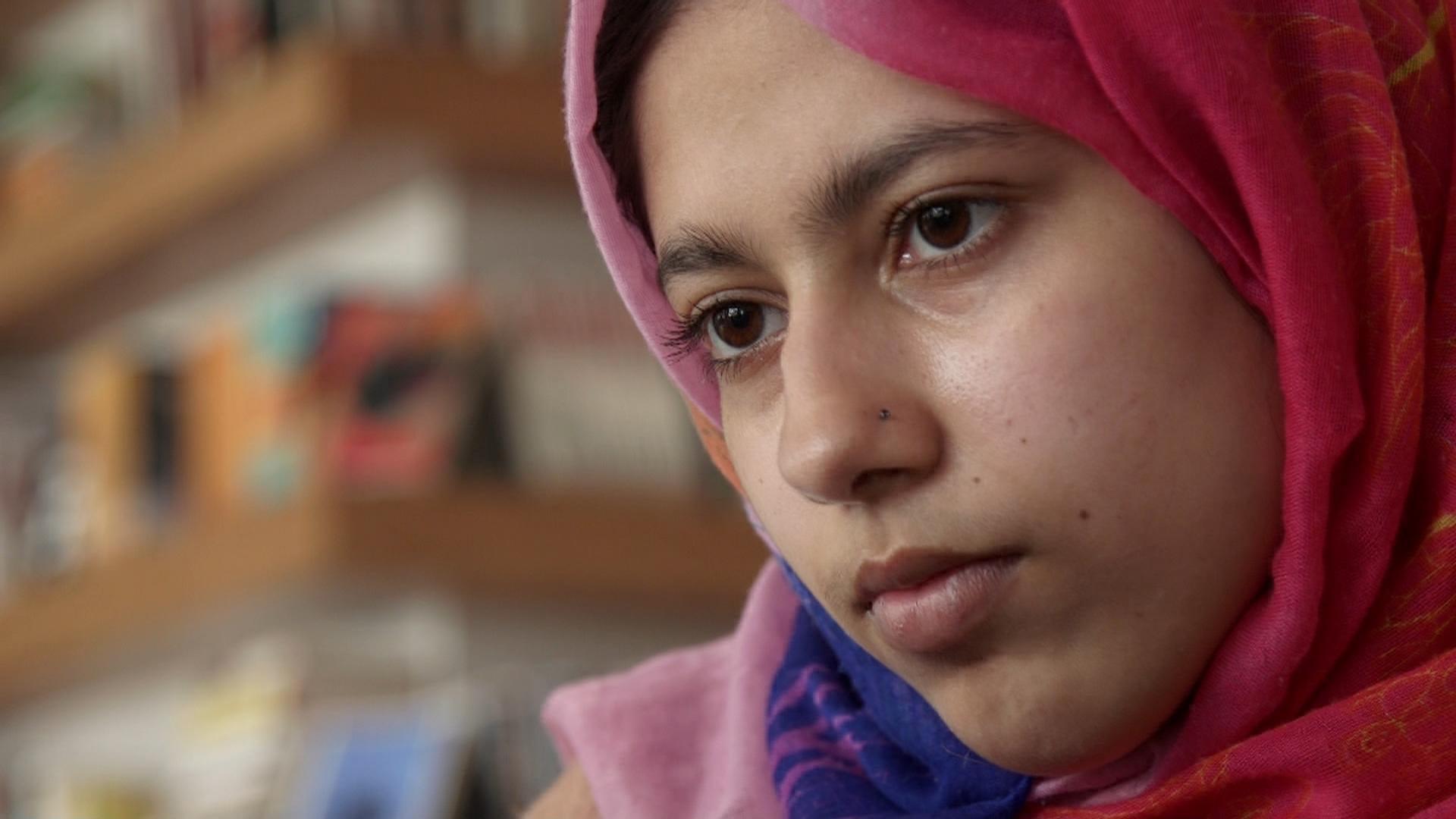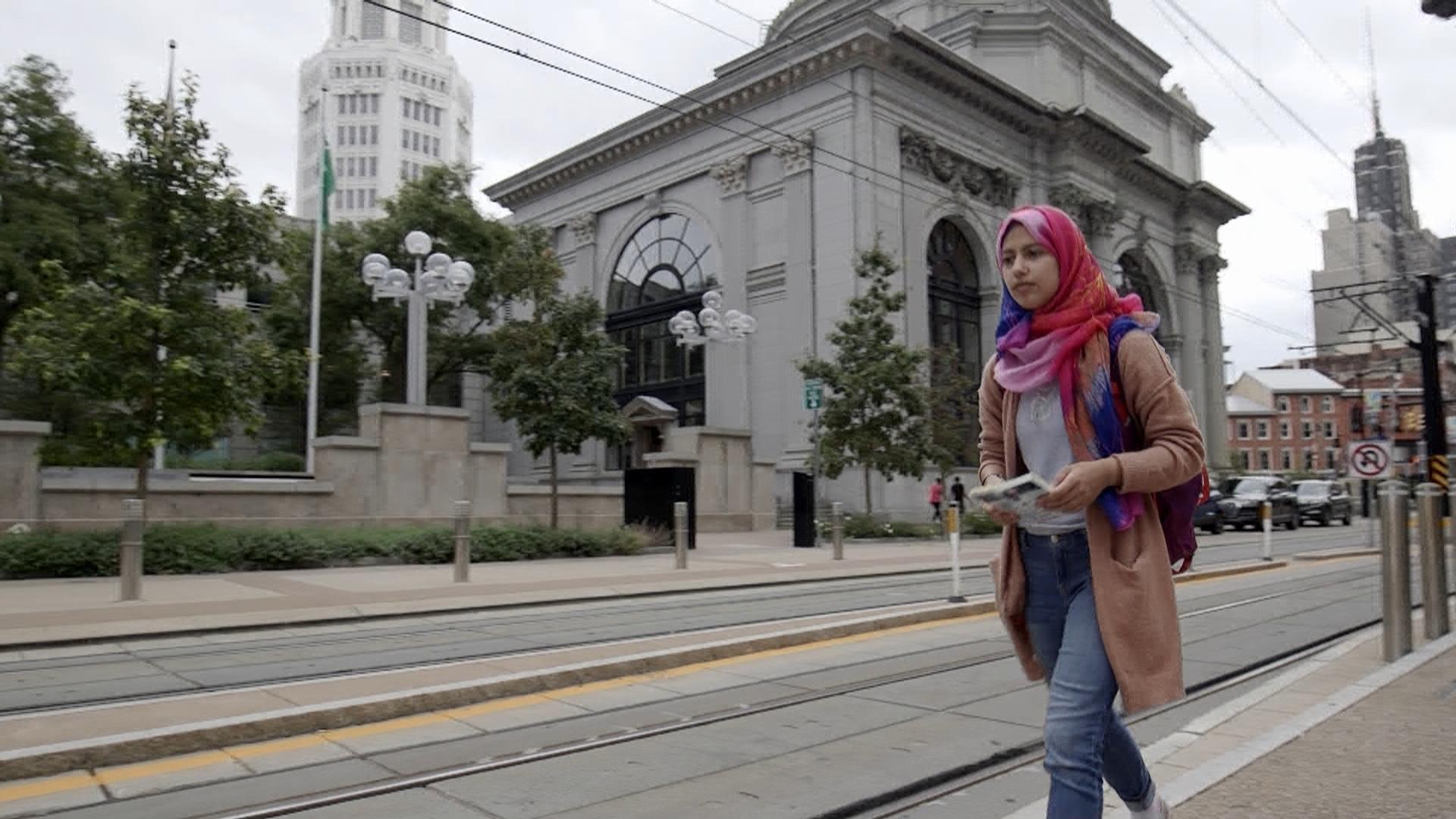
Making Buffalo Home | Stories
We know that statistics cannot tell the full story of immigration, people do. Through this project, we’ll meet some people who have made Buffalo home and learn about their journey, struggles, accomplishments, hopes and dreams through their words, experiences and ideas.
This video series profiles people who have made their way to Buffalo recently from countries such as Burma, Somalia, Iraq and Vietnam but we'll also introduce you to people who's ancestors made their way Buffalo via Italy, Ireland, Poland and Germany decades ago.
Meet Felipe Shibuya
Meet Felipe Shibuya, a University at Buffalo biologist from Brazil who calls Buffalo home.
Felipe Shibuya takes what we cannot see and brings it to life by transforming it into art.
“I was reborn in Buffalo – like a Phoenix,” Felipe said.
Felipe Shibuya is a 34-year-old Ecologist working toward his MFA in Bio Art at the University at Buffalo. He was born in Brazil, and spent most of his life there, nurturing his love of science and nature. He earned his Ph.D. in biology there, and in 2016, Felipe and his husband Pedro, who is also a scientist, made their way to the United States to take advantage of an employment opportunity in Boston, MA. Felipe found himself exploring all the ways he could use his degree in biology and stumbled on an opportunity in Buffalo.
It was a risk to move away from his partner and to a new city. It was unfamiliar and challenging. Felipe spoke very little English and relied on Pedro for everything. In Buffalo, Felipe struggled with the language barrier and had to re-learn fundamental skills to help himself get around every day. It was a challenge to perform the simplest tasks, like order a cup of coffee or take the subway to campus. Despite the steep learning curve, as he became more familiar with his surroundings and became better at speaking the language, this place began to feel like home.
Although separated by hundreds of miles, Felipe and Pedro continued to work on a project which helped visualize immigration census data. Together with their colleague John Wihbey, they created Dendrochronology of United States Immigration, which is on display at Albright-Knox Northland. In this creation, Felipe discovered that when you assemble the data as small dots and assign them color, over time, the image resembles a cross-section of a tree. Each ring represents a decade and each dot, or cell represents 100 immigrants. Colors correspond to the country of origin for each immigrant group. The artwork is displayed both on paper as a still image, and as an animated time-lapse from 1850 to 2000.
"I don't want to see people as charts," Felipe said.
Felipe is passionate about properly representing and expressing humans as an organic, key part of the world. He believes that no matter where we come from, we all are a part of this “Forest of Immigration-together we can make this place alive.”
His team has plotted the census data for all 50 states in America and has laid them out in geographic orientation – a visual representation of how the forest of immigration comes to life on paper.
Felipe plans to graduate in the spring of 2021 with his MFA in Bio Art. Buffalo has become a very special place for him. This is where he rediscovered his independence. The journey of an immigrant often includes risk, uncertainty, and bravery. Felipe is sharing his story and his art with Making Buffalo Home to communicate his personal journey in the hopes that others see how we all come together as one.
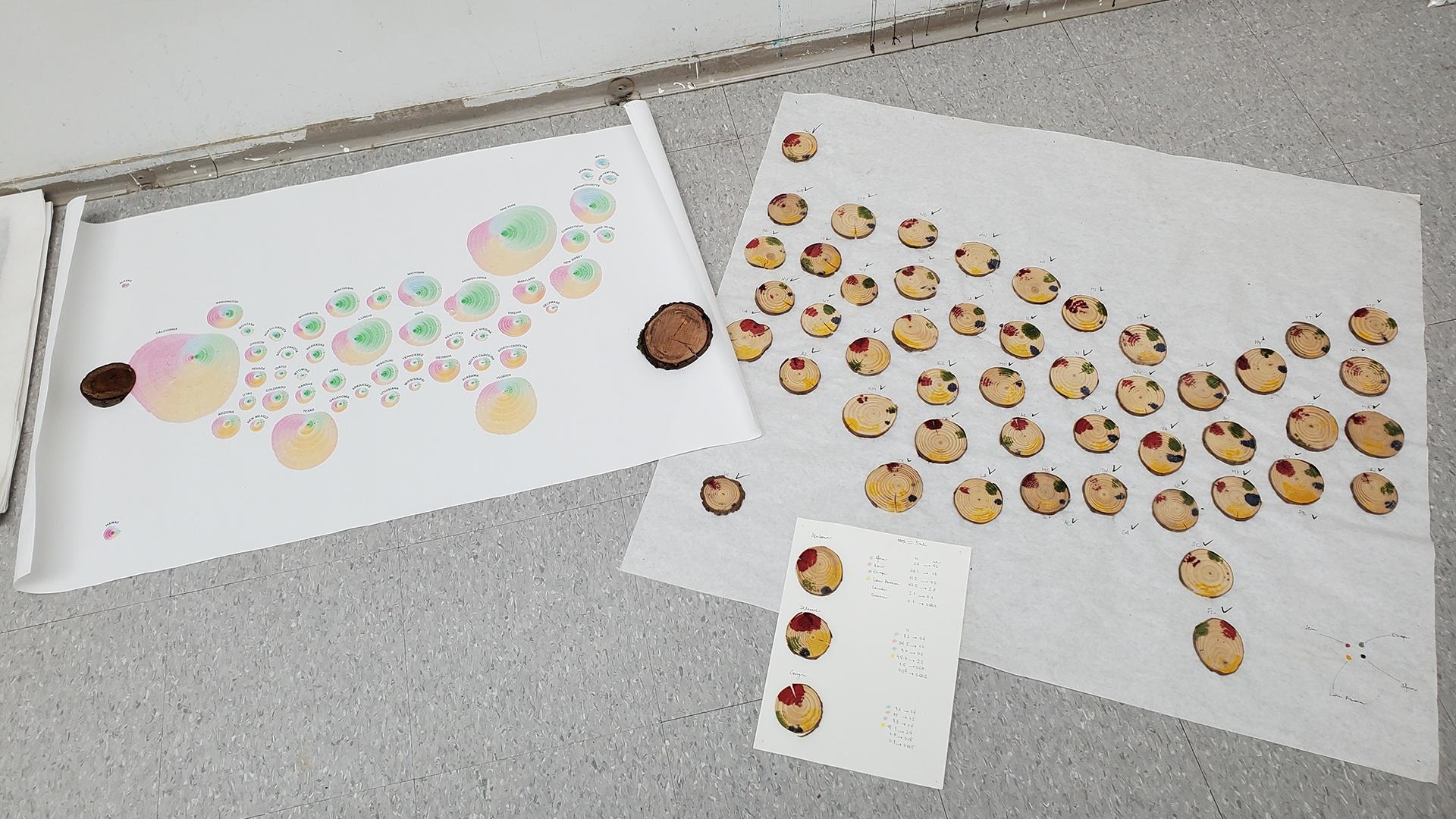
Meet Zanaya Hussain
Zanaya Hussain uses the power of the pen to write about others who have made Buffalo home.
Zanaya Hussain is an 18-year-old writer and poet from Buffalo, New York. She is first-generation Bengali on her father’s side and second-generation Albanian on her mother’s side. Hussain spent her youth in New York City, where her parents both worked very hard to make ends meet. Her father was a taxi driver by night and worked mornings at a corner store. In order to have more family time, financial freedom, and space to grow, the Hussain family moved to Buffalo in 2006.
In her youth, Hussain loved to read and write. “I used to make little storybooks," she said. "So I’d take printer paper, write the captions for what each page would say, and then draw the illustrations, staple them together and I'd give them to people.”
Hussain started writing as a way to navigate her personal experiences. This passion led her to a support system within the Buffalo writing community at the Just Buffalo Writing Center (JBWC). This past summer, she was selected as a writing fellow and chose the theme, “What Makes Buffalo the ‘City of Good Neighbors’.”
Hussain had wanted to meet more people in the refugee immigrant community in Buffalo. She identifies with this community as the first generation on her father’s side but also wanted to become aware of other people’s experiences. Hussain began interviewing others about what it means to be an immigrant in Buffalo.
“I wanted to really showcase some of our Buffalo population and celebrate them,” she said. “Readers can learn that, first, we're all humans, and what it means to be an American.”
She interviewed Nada, an artist from Syria, about how her personal experience has shaped her art; Hawo, who spoke about her experience embracing multiple cultures; and “J”, who strives to avoid labels that others put on him.
Before her fellowship with Just Buffalo Writing Center, Hussain often wrote poetry and prose. With this project, she took a journalistic approach and relied on the expertise of JBWC leaders and outside writers to provide feedback.
“Writing helps me express myself," said Hussain. "It gives me freedom over how I want to convey myself through my writing. I can be anyone I want to be through my writing. So just being able to have that creativity and picking words, and being able to control the message that a reader who's reading my writing might feel or experience or even learn from my writing.”
She is still navigating her multicultural identity. There are many biases that come with being Bengali and a mixed Muslim American. Through the process of interviewing other immigrants and exploring her own identity, Hussain has learned more about what it means to be a multicultural American.
“A group of people can live in one place and we all will view it differently,” she said. “I think it's critical to share those stories and be open with your experiences and those differences. It allows people to be more empathetic of other people's stories, experiences, whatever aspects of their personal life that they are comfortable in showing the world.”
In the future, Hussain hopes to continue helping refugees and immigrants. She cannot see herself leaving too far from Buffalo.
“I know that I want to help people, aid people in any way that I can, and continue to amplify the voices of the refugee and immigrant community," she said. "Not just in Buffalo, but globally too. This project has taken me full circle because I am interviewing people who have decided to make Buffalo their home.
"And that takes me back to my own story, why my parents decided to make Buffalo home.”
Meet Hebert Schmidt III
Herbert Schmidt, III works to keep German-American culture alive in Buffalo, NY.
“There is nothing like the feel of walking into an Oktoberfest tent. You smell the grass. You smell the beer. You smell the brats and the kraut, and then you hear this music. It could be a polka, it could be a march. It could be a Rheinlander. It could be any kind of music. And it just puts you in this feeling of, oh, I'm hearing the voices of my ancestors.”
The music Herbert Schmidt, III refers to, helps create a moment that Germans call "Gemütlichkeit " which loosely translates to being at the right place at the right time doing the right thing and doing it the right way. A state of being, inner peace, and ultimate happiness. This is the feeling he gets when connecting to his roots.
Herbert is a third-generation German-American with a true love for German culture – the rich history, festivals, music, traditional clothing, and food. He remembers the traditional holidays like Christmas and Easter, eating traditional German meals and listening to his grandfather sing nursery rhymes in German while the family joined in. To this day, his family still has recordings of his grandfather singing those songs.
Herbert’s grandfather came from a tiny little town called Leisnig in Saxony, which is south of Berlin. His grandmother’s side comes from Wilhelmshaven, Hamburg. Over the years, most of his family left Western New York. To fill that void, and keep the connection to his roots, Herbert teaches his children the German traditions.
“My children are learning the value of culture. They all have outfits. They are my little hummels. One of my favorite pictures is the three of them on our front porch all dressed up. They're learning the music, they're active.”
Herbert remembers his formative years fondly. As a teen, he was recruited to play trumpet in a group called the Worshiping Brass Ensemble. While performing with the ensemble, he and other band members got involved with a German band called the German American Musicians Association. Since 1933, GAMA has a rich history in Buffalo, created to form a union of performing artists to insure their payment through performing at huge festivals, events, and parades. Herb has been an active member for nearly 20 years and is thankful for this connection to his culture and the community.
Americans often associate sausages with German cuisine, but there is also a variety of German potato salads, rye and pumpernickel bread, and different flavored brats and sauerkraut. Herbert's favorite German meal to prepare himself is Rouladen.
"It is rolled beef, Grey Poupon on the meat, or a nice spicy brown mustard, pickles, onions, and carrots. Roll it all up. You boil it in a broth, then you add some tomato paste to thicken it, and then you have some nice egg noodles or Spaetzle, and serve it with some red cabbage, a nice dark beer. Heaven. Heaven."
In addition to having festivals and parades to stay connected to their community, the German American Musicians have carried on the tradition of holding a regular stammtisch – a thematic impromptu evening. In Germany, the theme might be political or recreational. Here in Western New York, a stammtisch is often performance-driven with German-American musicians gathering to sing and learn drinking songs, learn about the culture, the clothing, the language, and the differences between German-American culture and German culture.
Herbert sees celebrating and having pride in his culture as a way to bring all people together.
“I think culture is one of those last ways of getting people together of all cultures to say, you know what, we're all going to get together regularly, make friends, eat and drink flavors that we can't otherwise find. Because let's face it, culture is the spice of life. It adds so much depth and complexity to our existence. You can't go to eat the same thing every night and get the most out of life. We're here to enjoy ourselves. Life, liberty, and the pursuit of happiness.”


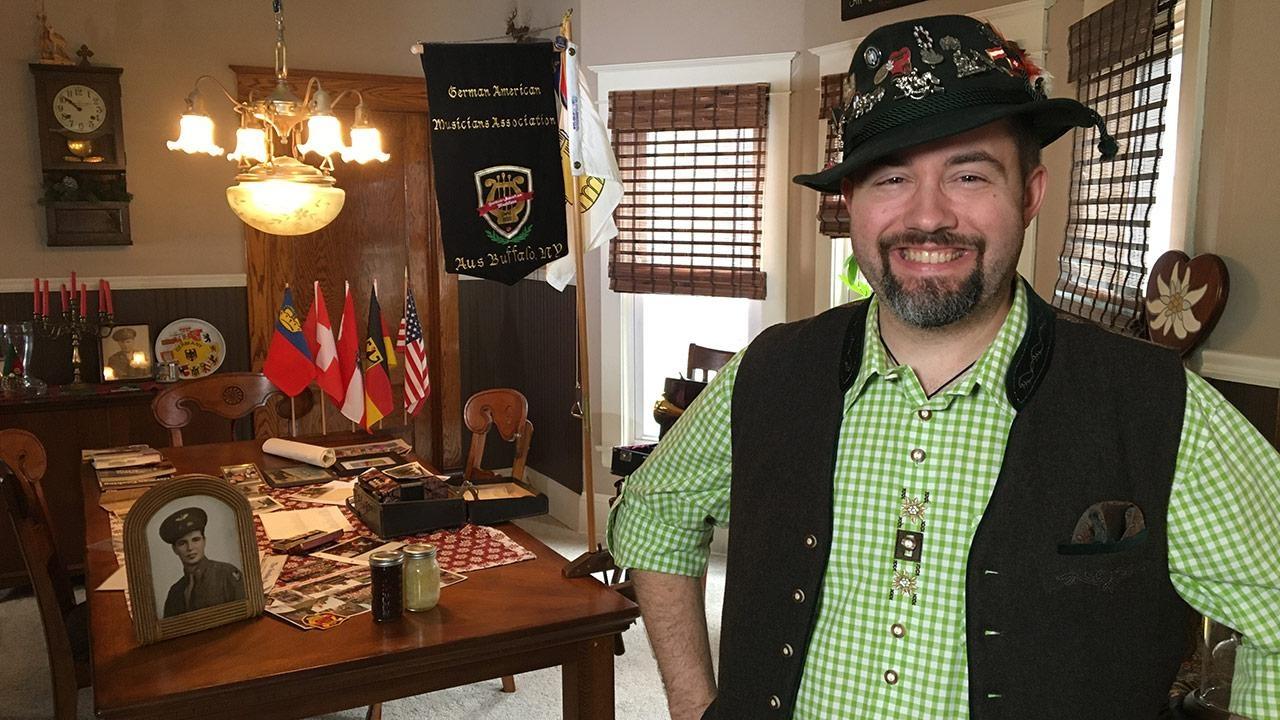
Meet Joe Di Leo
Joe Di Leo’s family emigrated from Sicily in the early 1920s, settling in Buffalo, NY.
Joe Di Leo lives a life that has truly come full circle. As a first-generation Italian American, he knows what it is like to come from meager beginnings. Now he devotes his time to helping Buffalo’s newest immigrants establish their first homes in America.
Joe’s parents were born in Sicily, at the turn of the twentieth century. “Well, my dad was born in 1897 in the province of Agrigento, a little small town called Burgio,” he said. When Joe’s father was three, his father left to come to the United States. He’d had enough of the life as a sulfur miner, a horrid job, and longed for a better opportunity for his family.
“My grandfather was a sulfur miner and his father was a sulfur miner, and that was a terrible occupation,” Joe said. “Booker T. Washington, that great American, took a trip to Italy in 1906 and he toured the sulfur mines. And his comment was that the sulfur mines in Sicily were the closest thing to hell that anybody could be in. There was no opportunity back in Sicily for them,” Joe said. “If your father was a sulfur miner, chances are you were going to be a sulfur miner. If he was a barber, you were going to be a barber. There was really no chance to expand a career.”
Joe’s grandfather made it to America and settled in Buffalo on Canal Street in what was then referred to as “The Hooks”. After six long years, he was finally able to send for his family. Joe’s father was nine at the time.
His maternal grandfather took a similar route, and settled in Pennsylvania. He worked in the coal mines with the intention of earning enough money to return to Sicily and purchase land to farm. Upon his return to Sicily he realized that the United States offered his family more opportunity and a better life.
Both his paternal and maternal ancestors eventually settled in Buffalo and neither of Joe’s parents had much of an education as they were expected to work at a young age. To make ends meet, they labored on nearby farms and in canning factories, often leaving their Buffalo home for months at a time.
Joe was born in 1940. His family lived on Lower Terrace in downtown Buffalo in the shadows of City Hall and St. Anthony’s Church — the epicenter of activity for many Italian immigrant families. “We lived on the fourth floor of a tenement building,” Joe said. “We had no hot water, no bath tub or a furnace.” A coal stove was the only way Joe and his family kept warm.
Though the family’s means were modest, there was a sense of closeness for Joe and his extended family. “My cousins lived across the hall from us, my grandmother and grandfather lived on the third floor, my cousin and my uncle and my aunt lived on the second floor,” Joe said. His uncle even owned a small tavern at street level.
St. Anthony’s church on Court Street was, and continues to be, a major part of Joe’s life. “I graduated from Saint Anthony's School, was married from Saint Anthony's church, and we baptized all our children at Saint Anthony’s, so that was a big part of our growing up,” Joe said. He recalls the church as a mecca for the neighborhood for spiritual life and the social lives of the many Italian families who were parishioners.
Joe went on to marry his wife Toni, enjoyed a long career with the postal service, and raised four children. In 2005, on a whim, he put together a small two-page newsletter about Buffalo’s Italian heritage called Per Niente. That tiny newsletter has grown over the years, and is now a professionally published magazine with 600 subscribers.
In the magazine’s early days, Joe looked for something he could do with the few hundred dollars its distribution had netted. Joe’s wife, then principal of St. Margaret’s School, knew of a family in need at Christmas time so the money went toward buying toys and gifts for the children.
Today, Per Niente brings in over $28,000 per year. The proceeds from the magazine are used to help Buffalo’s new immigrant families set up their first homes in America. “We look for people who fall through the cracks, who feel they have no hope, that they've been forgotten about, and we reach out to them,” Joe said. “We find out what their needs are, could be a bed, a refrigerator, furniture, a scholarship to help them get through school.”
Joe sees the appreciation that these new immigrant families have for his organization’s generosity. “We'll do whatever we can to help these people, to shed some light in their life where they think that no one cares, and it works,” he said. “I could see in the look in their eyes, how grateful they are that there is someone there to help them.”
To Joe, the parallels between the journey of his family and those arriving today are striking. “They came with nothing,” he said. “They had nothing really to rely on, but their hard work and just an opportunity to make a better life for themselves in which they did.” “These people who are coming now, they have the same ambition in their lives.” Joe’s purpose is to help them.
Meet Mary Heneghan
Mary Heneghan, a second-generation Irish immigrant from South Buffalo, holds the secret to strengthening one’s identity: Connect to your culture. In 1922, her father John Breen emigrated from Ireland in search of better economic opportunities, but never let go of his love for Ireland. That love was passed down to Mary. Now she and her children do the best they can to continue his legacy.
Mary Heneghan holds the secret to strengthening one’s identity, confidence and sense of gratitude:
Connect to your culture.
Mary is so passionate about staying connected to her Irish heritage; she has dedicated her entire life to doing so. The 74-year-old was born and raised in South Buffalo. Her father, John Breen, emigrated from Ireland for better economic opportunities. He worked at New York Central Terminal (now called Buffalo Central Terminal), but never let go of his love for Ireland. Breen continued to go Irish dancing, visit Ireland, and tell stories of growing up in Kilmihil. He even married an Irish-American girl, Katherine Scanlon, from South Buffalo. Together, they had three children.
Out of the three -- Mary inherited her father’s fervent passion for his culture.
She began Irish dancing at the age of 11 and during her early teen years, had opportunities to travel to Ireland with her father and visit family. They stayed with her Aunt Katie, who lived in a row house in Kilmihil. At night, friends and family would fill Aunt Katie’s kitchen -- singing, playing the flute, dancing and lilting. Mary was mesmerized -- not only by the music, but by the warmth of the people.Those trips strengthened the connection she had with her culture.
“When I saw how warmly those people reacted to strangers and how welcoming they were, it just sort of engulfed you and made you appreciate them, and what they offered to you to entertain you for an evening,” she said.
Mary returned to South Buffalo and became more involved in the local Irish community. At 19, she met the love of her life at an Irish picnic in Schiller Park. Luckily, he was also Irish.
“I met Tom Heneghan, he was from Kilmaine, County Mayo,” she said. “He had beautiful blue eyes and a great Irish accent and a red MG. So Carrie Grant arrived in my world.”
A year later, they were married at Saint Theresa's Church. Together, they had four children: Mary Kay and Thomas Jr., who are twins, then Shannon and finally, Barry.
Mary earned her master’s degree in education and taught in the West Seneca school district for a few years. When her husband started a business, she decided to leave teaching behind and help him out. It would not be long before an idea she spent years thinking about would become a reality. Mary dreamed of starting a business of her own: an Irish import store in South Buffalo. It was a huge financial risk. It would not offer the stability or benefits teaching would. However, Mary was so passionate about her culture -- she knew it would be far more enriching. And it was.
Tara Gift Shoppe, on Abbott Road, gradually became the hub for all-things Irish in Buffalo. Because it is located directly across the street from the Buffalo Irish Center, people would call to ask questions about local Irish groups and events. Naturally, Mary began getting involved with the Irish Center too, and went onto become chairperson -- a position she holds to this day.
Her twins, Mary Kay and Tom Jr., are continuing to carry on her legacy in Western New York. Mary Kay excelled in Irish dancing and now owns and operates the Rince Na Tiarna Irish Dance School, teaching throughout the region. Thomas Jr. took over Tara Gift Shoppe.
“I'm really proud that my children have all done their part for the heritage, but it's really special to see Mary Kay continue on with the Irish dancing because I did it for so long. And I'm proud that Thomas was able to take over for me and continue to run the shop,” Mary said. “But again, with the perspective a younger person has, not what his mother turned over to him.”
While Mary was growing up, St. Patrick’s Day was special. It started with mass, and everybody would dress up. Her father would wear his full top coat and a sprig of shamrock from Ireland on his lapel. Then, everyone would go down to the parade and celebrate.
According to Mary, the holiday has changed over the years.
“Saint Patrick's Day is a double edged sword sometimes. In my father's generation, Saint Patrick's Day was truly a religious celebration, a respectful celebration. And although we try to make it that way, it doesn't always turn out that way.”
She is talking about inappropriate t-shirts displaying ethnic slurs or stereotypes about Irish people and their love of drink.
“It wasn't just, ‘Let's go down and see who's got a green beer,’” Mary said. “It was about community, it was about Ireland, it was about the organizations that exist in the area. It was about what the Irish had contributed to Western New York and the United States. That was the focus and it should be the focus now.”
The Irish have contributed to so many fields -- both in Western New York and across the United States: mills, railroads, police and fire departments, politics, corporations. Mary’s goal in life is to remind people to appreciate what immigrants, not just the Irish, have contributed to our area. Her father certainly contributed to the Buffalo community and enriched the area with his culture. Today, Mary is doing the best she can to continue that legacy.
Meet Kang Guot
Kang was born in Sudan and escaped his country's civil war before making Buffalo home.
Kang Guot is one of the so-called Lost Boys of Sudan. He spent most of his youth on the run and in refugee camps, before eventually being resettled in the United States in 2004.
“I have survived all that hardship and I'm now the living witness to tell what has happened,” he says. “That means I'm lucky.”
Kang believes education transformed his life. “Like it was said by Nelson Mandela, education is the only tool you can use to change the world.”
In 1987, civil war drove an estimated 20,000 young boys from their families and villages in southern Sudan. Most just six or seven years old, fled to Ethiopia to escape death or induction into the northern army.
“One of the battles forced us to run,” said Kang. “It was win the night. We heard a lot of gunshots everywhere and then my grand mum told us to go and hide somewhere on the palm land. My brother and I ran with my uncle. He told us that we are going to stay somewhere and hide until when it is okay for us to go home. That never happened.”
They walked more than a thousand miles, half of them dying before reaching safety. The survivors of this tragic exodus became known as the Lost Boys of Sudan.
Kang and the other survivors who reached the camps in Ethiopia started to lead a relatively peaceful life. “We were camping in a place called Pinyudo,” Kang recalled. “And from there is where I and my brother and other kids, joined school over there and then we were taught A,B,C,D. That was my first real taste of education.”
But it was not to last. Following the change of government in Ethiopia in 1991 they had to flee again. This time the journey was during heavy rains, and many perished crossing the swollen rivers or were hit by aerial bombardment.
“I remember in a place called Gilo heavy fighting took place and a lot of people died,” said Kang. “In the crossfire, some decided to jump into the river. If you don’t know how to swim, you would not make it out. There were a lot of crocodile in the river, and those who were not lucky and collide with a crocodile, then that was the end.”
After months of being on the run, Kang and his brother eventually reached Kakuma refugee camp in Kenya.
Kang realized that he could create his own change and education would be the key to liberating himself.
“First, I just saw myself, I was the victim of everything. And then I think of it, I said let me make sure that I and my brother will study hard to change this kind of life we're leaving in,” said Kang. “In Kenya is where I have a feeling that I really join truly school. There was progress. We kept on moving from one grade to another with no interruption. I was investing in myself.”
Kang continued his education. The United States government, working with the United Nations, made arrangements for thousands of Lost Boys to come to America for a chance at a new life. Kang was accepted but, but the September 11th attacks suspended his resettlement.
In 2004 Kang was finally able to come to Syracuse, New York. Like many refugees he faced an uphill battle living in a strange new land and learning new ways. He struggled to both work and go to school at the same time.
"To settle and then to find a way to go to school was a little bid hard," said Kang. "You need commitment, patience and tolerance. I never used a computer. I had to find a way to learn the computer because all the homework was on the computer. I had to work to help out my brother that I left in Kenya."
After after eight years, he earned his associate’s degree from Onandaga College. and moved to Buffalo to continue his education at SUNY Buffalo State where he earned a bachelor’s degree in international relations and economics, with a minor in biochemistry.
“I want to be role model for my people because where I was born and grew up, there was no one that have came to the U.S. to study to get a degree. So I'm the first one,” Kang said proudly. “I want to be a teacher to give back to the community and motivate others. That is my dream.”
Today Kang is pursuing his masters in the Educational Studies program at the University at Buffalo. He also works as a mentor and teaching assistant to help middle-school students from refugee families on the West Side of Buffalo through WEDI's FLY program.
“I'm in a good position because I'm motivating them and I'm telling them, ‘See I was just like you. I used to sit in a place where you are.’” And now Buffalo is home. “I find it is a place that you can find good opportunity if you don’t give up.”
Meet Akruti Babaria
Meet Akruti from India, who came to America as a teenager, and now calls Buffalo home.
Immigrants from India slowly began arriving in the United States 200 years ago. In recent decades, the Migration Policy Institute says the number of immigrants from India has grown substantially, accounting for almost six percent of the foreign-born population, and second only to Mexican immigrants.
Akruti Babaria is just one story of an Indian immigrant who is making Buffalo home.
Her uncle had been living in America for some time and applied for his families’ immigration in the late 1980s when Akruti was very young. It took 13 years before their immigration was approved. Akruti’s parents, having raised both of their children to be quite independent, gave her the choice to stay in India or move to America. Akruti followed her gut and decided to come to America. At the age of 16, her parents put her on a plane and she came to the United States by herself, with the rest of her family to follow a few weeks later.
Life in America for Akruti was very difficult at first. Being a teenager at a new school – not knowing the students there and not even knowing the language very well – nothing was easy. Akruti had to work very hard to be successful both in school and in life. She shares the credit for her success with the teachers and faculty at Williamsville North High School, praising them for being so accepting and supportive.
Moving to America was also difficult for the rest of Akruti’s family, including her parents, who both held stable jobs in India – her father a Ph.D. in civil engineering and her mother, a schoolteacher. Akruti’s parents had to sacrifice their careers while relocating to the United States, picking up any jobs they could find.
“For them, the main purpose was, how can we give our daughters the best possible education and the best possible chance for them to succeed and be whatever they want to be in life?” Akruti said.
After finishing school and marrying her husband who also came from India for his college education, Akruti says the day her life really changed was when they had their son.
“Having a child turns your life completely different," Akruti said. "It really made my husband and I realize how important it was for us to pass down our heritage. We wanted our son to know where his parents and grandparents are from. We wanted him to understand his identity.”
There are several things they do to keep Indian culture present in their everyday lives. Akruti and Umesh speak to their son in both English and Gujarati consistently at home. At school, he speaks English. Raising a bilingual child is important to them. They’ve invested a great deal in books and other resources from India that can help bridge the gap between their American and Indian cultures. It was quite a challenge for Akruti to find appropriate resources for every age level and she figured, if she was having difficulty finding resources, other Indian American families might be as well. She was right. Organically, her passion for providing cultural education to her own child was the catalyst for a business venture called Kulture Khazana, which provides resources and programming for families, schools, and communities. Now she’s educating Indian and American born families about diversity and Indian culture.
Akruti reflected on her journey to America and to Buffalo. “I have lived more of my life in America than in India. I have childhood from India, but I became an adult in America," Akruti said. "When it comes to traditions, festivals, and food, it's India. When it comes to having freedom of pursuing my dreams, when it comes to independence, when it comes to work ethics – it's America. So I would say India in some ways is my mother who has given me the heritage and roots and America is like a father who's taught me how to be independent, have the freedom of choice and to make something out of myself. And I love them both equally.”
You can find out more about Kulture Khazana at https://www.facebook.com/KultureKhazana/
Meet Hassan Al-Mufti
Meet Hassan from Iraq, who spent years as a refugee before making Buffalo home.
Born in Baghdad, the capital city of Iraq, Hassan Al-Mufti took an interest in music at a very young age. When he was just six years old, Hassan’s parents enrolled him at the Music and Ballet School of Baghdad where he partook in an intensive after school music program studying piano.
By the time he was a teenager, life changed for Hassan and his family as they became exposed to the many atrocities of war during the 1980s and 90s. To this day, Hassan can vividly recall this difficult time of his life. “I still remember the heavy bombing of Baghdad by the coalition forces. Couldn’t help but wonder how could the western world produce such a beautiful work of Beethoven and Brahms and Chopin…at the same time have the means of destruction like this,” he says. Hassan also lost his brother, grandmother, and father during this time adding to the devastation witnessed by his family.
Because of the Iraqi involvement in the war, Hassan’s dreams of representing his country as a pianist were dashed. The war resulted in severed ties with the Soviet Union and the defunding of the music program. Hassan says, “So the aspiration of studying abroad and to become a pianist where I can represent my country on the international stage was an idea I could no longer entertain, and as any Iraqi who lived at that time, our childhood dreams vanished.”
While he wasn’t able to continue with the music program, Hassan still practiced the piano and managed to attend the University of Baghdad where he graduated with a degree in musicology. However, following the first Gulf War, life at this time was unbearable for Hassan and his family. He knew that seeking out a better life in a different country was “inevitable”.
In 1995, Hassan received an invitation to play a concert in Amman, Jordan. Knowing he couldn’t bear to return to Baghdad, he decided to stay and make a life for himself. He lived in Amman for six years before applying for refugee status and just two weeks after September 11, 2001, he arrived in the United States. Hassan was concerned about coming to the U.S. during this time period, saying, “The country was boiling at that time, and I was very nervous about it, because you know, after all these years of waiting, dreaming about finally I go to a place where I can study piano or music and improve my life, and here I am, I come to such a trying time in the history of the US.”
Though Hassan was nervous about coming to the United States at such a difficult time, it had always been his dream to play and study in America. He received nothing but respect, kindness, and welcoming from day one. Hassan arrived with only 20 dollars in his pocket and moved to Buffalo as part of the resettlement plan facilitated by the International Institute of Buffalo where he immediately fell in love with the city.
He got a job at the Community Music School of Buffalo where he began teaching piano while also taking lessons from the chair of the piano department, Kenneth Atkinson. During this time, Atkinson also taught him about the history of the United States as well as the development of music and piano schools throughout the world. Hassan’s time spent with Atkinson helped him not only become a better piano player, but also a better teacher. “He really managed to strengthen my weakness and polish my skills for better performances,” he said of Atkinson.
Upon Atkinson’s retirement in 2012, Hassan was named chair of the piano department of the Community Music School of Buffalo. Now, Hassan just hopes to help his students learn and further their ability so that they, too, can become great pianists. Hassan says of his students, “They want to further their education in music and piano in prestigious places in the US, and I'm just happy to help. I just hope that I could be influential on them the same way my teachers influenced me before."
Since coming to Buffalo nearly 20 years ago, he met and married his wife, and sponsored family members to come to America as well, including his mother.Hassan is proud to call Buffalo home. “I consider Buffalo home because of what Buffalo had to offer. Stability, security, peace, quiet, education, and love.”
Meet Kassim Kassim
Meet Kassim, from Somalia, who spent years as a refugee before making Buffalo home.
In Buffalo, NY, Kassim is about to enter his senior year at Lafayette International Community High School, where most students are foreign-born. At 18 years old, he’s endured more heart-breaking loss and struggle than most his age.
Kassim was born in Mogadishu, the capitol city of Somalia, during a long and turbulent civil war that still exists today. By the time he was six years old, Islamic extremist groups who opposed the Somali government were murdering hundreds and committing regular acts of terror. Thousands were fleeing due to the fighting, the drought, and famine. Kassim and his family were victims of this horrific violence. Late one afternoon, men rushed into the family home, armed with weapons, and brutally murdered his father while the entire family watched, including Kassim. He’ll never know why those men spared the rest of his family.
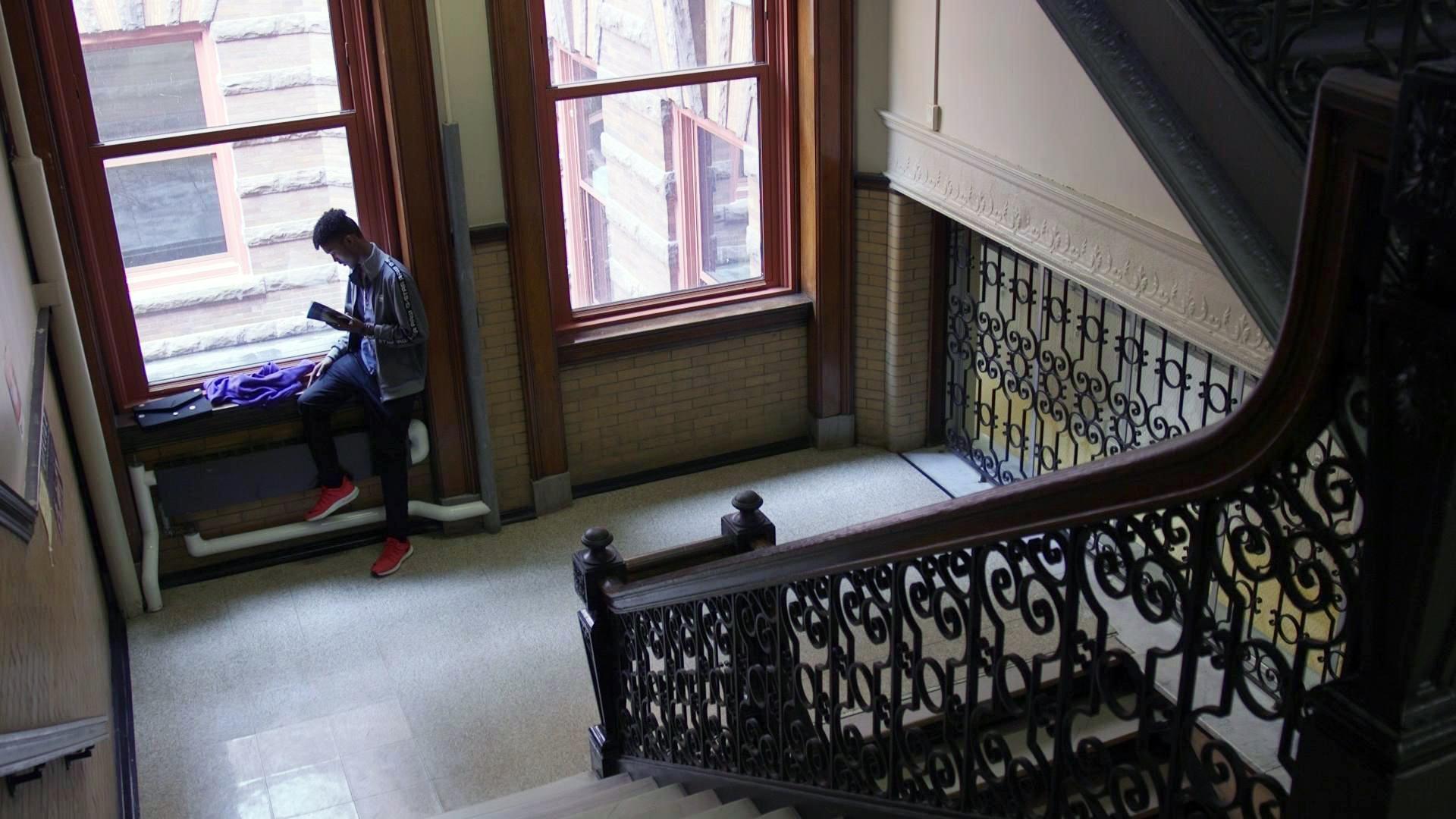
Tragedy left them fearing for their lives as the family fled to Ethiopia, where they spent the next eight years in a refugee camp. Life was difficult for Kassim, his mother, and his siblings. He struggled with the memory of his father. In the camp, life was only slightly better. They experienced violence, crime and corruption. His mother was attacked and suffered a broken leg. He remembers an ambulance rushing her to a local hospital, where she had to undergo surgery without proper anesthesia. Kassim was in constant fear for his safety and full of distrust for all people. He spent years dreaming of how he could avenge his father’s death, saying, “My plan growing up was to hurt the people who hurt my Mom and my family,” He continues, “But when they said we were going to America, it took about a year, and my plan started to change. I saw how nice the people were here. I didn’t want to seek revenge anymore.”
It was 2015 when the UNHCR (United Nations High Commissioner for Refugees) resettled Kassim’s family to the United States, and designated Buffalo, New York as their home. Absolutely everything was new for him – the language, the people, and the experience at a new school. Several years later, he’s beginning to feel like Buffalo is home. He thanks Journey’s End Refugee Services, the local resettlement agency who worked with his family, for making the transition a little easier. Kassim also credits the teachers at his school for how far he’s come.
At Lafayette, many of the students have similar stories to share from their background. The staff works to create a safe space for the kids to learn, to work through the trauma of their past, and to begin embracing life as a teenager in America. Kassim is reluctant to name a “favorite” teacher, saying instead, “They are all equal for me. I like the way they help me and are by my side. They ask how I am doing, they talk to me when I am sad or have a life problem. They understand what I have gone through.”
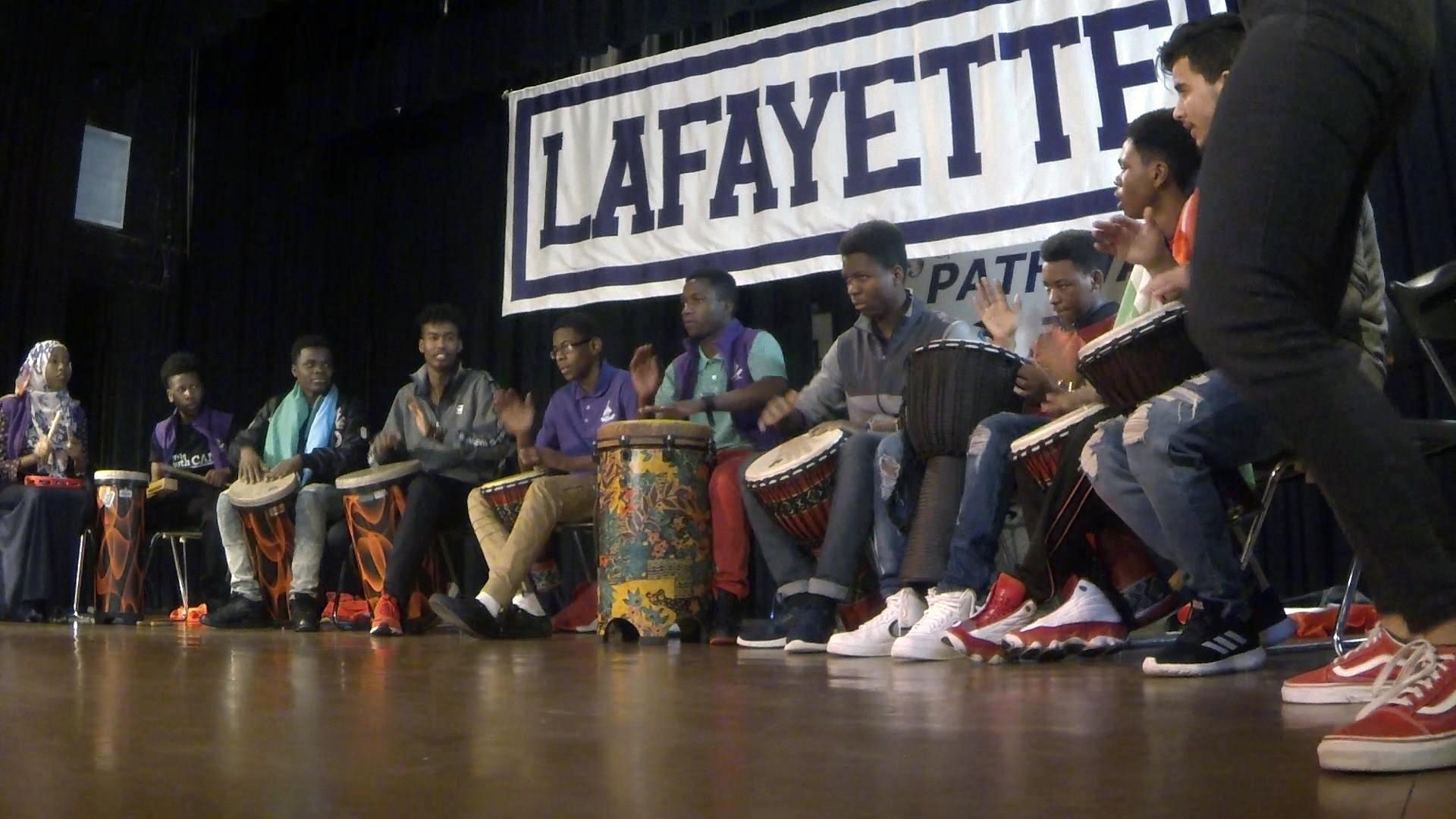
He plays soccer, performs in a traditional Somali dance group, and in a percussion and dance ensemble with his classmates. These friendships with his peers help Kassim feel a sense of connectedness. He sees how his contributions fit to serve a greater good. “All this drumming, they all are like a part of my family. They are all so nice to me and show me respect. I would also say they are better than my people (from Somalia), because they show respect that I’ve never had before,” he says.
Meet Beh Meh
Meet Beh who was born in Myanmar and grew up in a refugee camp before making Buffalo home.
Beh was born in a small village in Myanmar (Burma), a country that has suffered civil war, political oppression and ethnic conflict since the 1950s. She and her family are Karenni, an ethnic minority there.
“I don't really have a memory but my parents often talked about it,” Beh says. “They said during that time that it wasn't very safe. There was a war going on. We were not considered citizens. My dad was a leader in that small village because he was pretty educated so whenever the soldier came to the village, my dad has to be responsible for taking care of them. If not, then our family will be in danger. My dad did not like the responsibility and the pressure that he was under. So he escaped in the middle of the night.”
The family was separated for a year before Beh fled with her mother and older brother with the help of an uncle. Making their way to a refugee camp in Thailand, the family was finally reunited.

“Growing up in refugee camp, all I could remember was my dad constantly remind us to study, study, study,” she said. “My dad was a nurse. He would always say that if we're not educated we will end up being on the farm all day long having to work under the rain and the sun and he doesn't want that for us. So education is very big in our family. My mom didn't get to go to school when she was young. Her family cannot afford it. She had to work in the farm and she did not get a chance to go to school. And my dad had to leave my grandmother to get his education. So for them, for us that get a chance to go to school, it's a really big deal and they don't want us to miss that opportunity.”
The family spent nine difficult years in Thailand and eventually came to the United States in 2009 where they were resettled in Kenmore, New York.
“It was a cultural shock for me when I first arrived to United States,” she recalls. “I think you don't realize it unless you come in from a different culture. When I first got here, everything was just amazing. You have water running right in your living room. Back home I had to wake up really early to get water every morning for the house.”
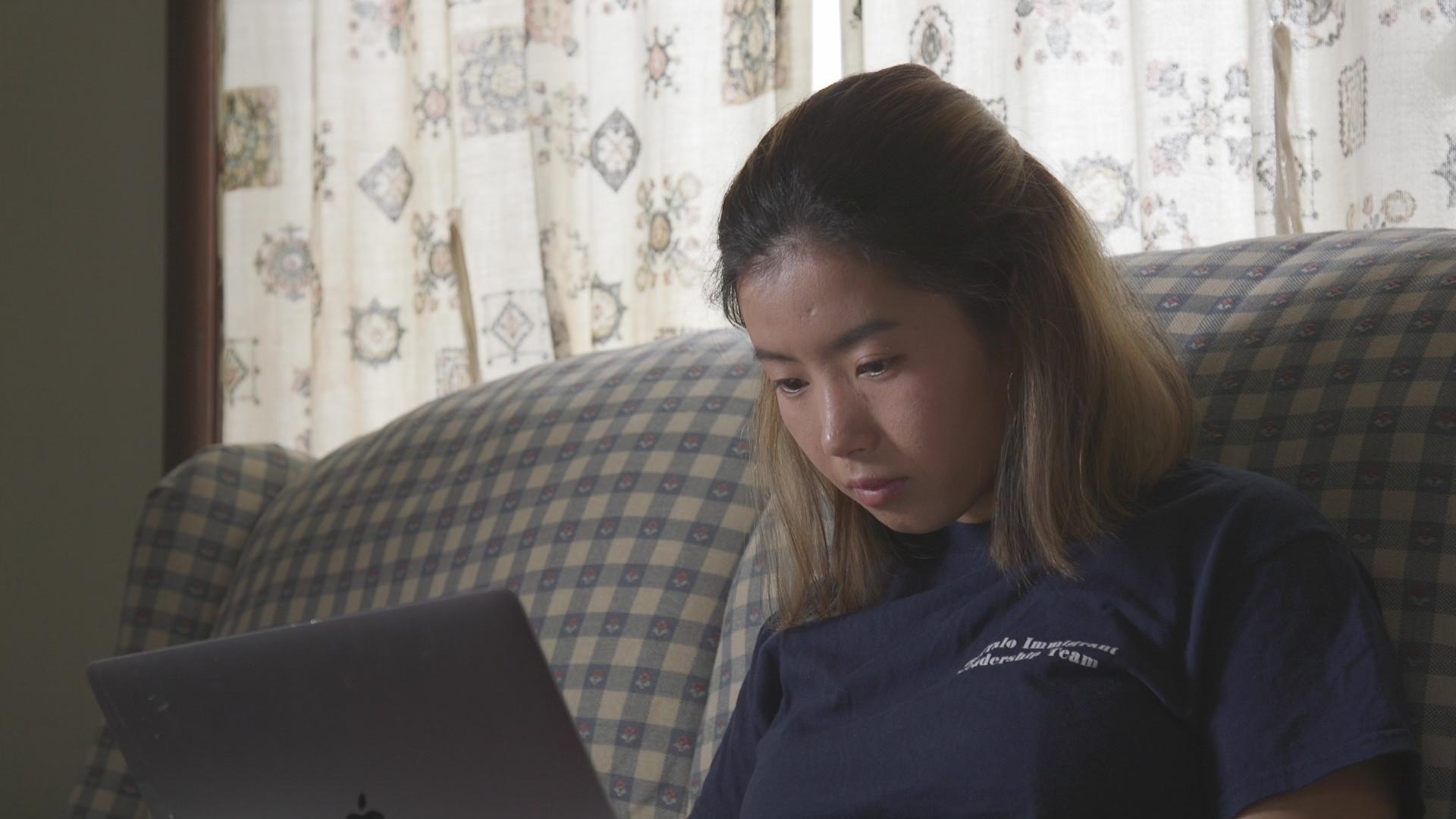
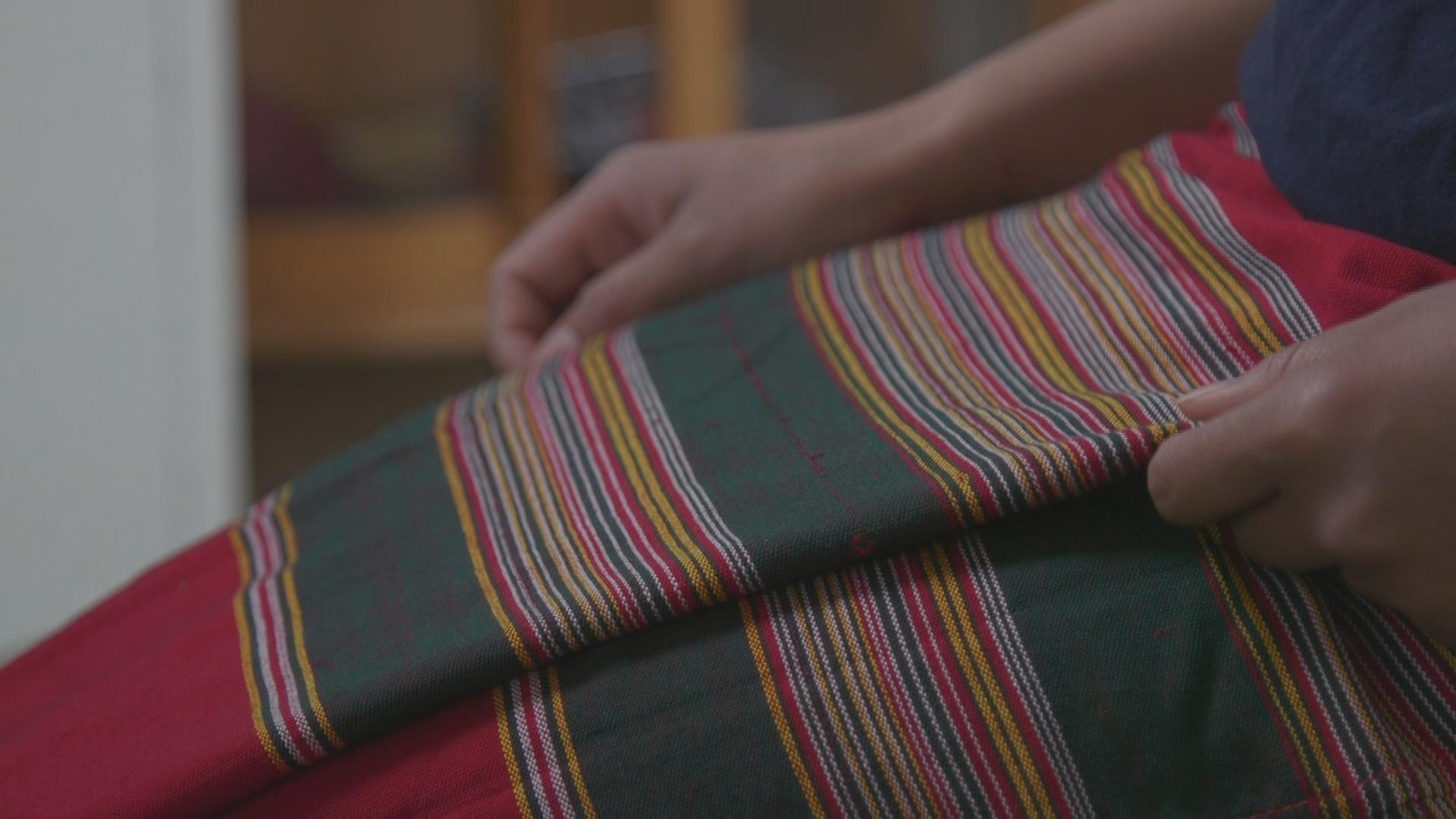
With unfamiliar surroundings and knowing just a few words of English school was not easy. Beh and her brother were the only students in the school that did not speak English.
“For my entire middle school year, I did not say anything except in ESL class, she remembers. “I just don't talk to anybody. The majority of the time I just listen, absorbing what's going on. When I got to high school I finally speak.”
Despite the language barriers a welcoming teacher fed her quest for learning and inspired her desire to be an educator. “I've always wanted to be either a teacher or a nurse,” she says. “My social study teacher was very welcoming. Even though I did not know any English, she always made me feel welcome in the classroom. At that time, I don't know how to express my gratitude. I went to visit her a few weeks ago and I told her the impact that she made in my life and ever since that I wanted to be an ESL teacher.”
Beh is pursuing her teaching degree at Buffalo State College. She is also active in the Buffalo Immigrant Leadership Team, or BILT, which focuses on increasing the graduation rate and lowering the dropout rate for immigrant and refugee kids. “I want to be an influencer so hopefully someday I'll change somebody's life just like my middle school teacher did in mine,” she says. "I'm very big advocate for education, so I really wish and hope that every kid will get educated and chase their dream."
Beh’s younger brothers were born in the refugee camp but were still very young when the family moved to the United States. Like many immigrant and refugee families, Beh and her family try to preserve their customs and traditions while making a home in their new country.
“Clothing and our language is a big part,” Beh says. “My mom always wears her traditional clothes, she always wears longyis wherever she goes. And my mom is always encouraging my younger brothers to talk and to speak in our native language so that they don't lose it, but they already slowly losing it. If I try to speak to them in Karenni, which is our native language, but it takes them forever trying to understand what I'm saying. The Karenni people that came from the same refugee camp. We hold the same culture. We share the same food. Deeku festival, we celebrate that in August every year. So everybody comes together. Every family puts in a little bit of donation and comes to cook together and they have music and dance."
Meet Juweria Dahir
Meet Juweria, who was born in Somalia and grew up in Europe before making Buffalo home.
Juweria was born in Somalia in the 1990s during the civil war. She was only a few weeks old when her family fled Mogadishu and were resettled in Männedorf, a small town in Switzerland. Juweria had a normal Swiss childhood, except her family spoke Somali and Arabic in addition to German.
“I grew up just accepting that I was different,” recalls Juwereia. “We were the only blacks, the only Muslims,” By the time I reached 12, we were then looking for a new home, so we relocated to the UK.”
Her family moved to Birmingham, where they connected with other East African families who also faced similar challenges. There, she added English to her list of languages and eventually went on to university. “I was also looking for love, like any young person,” she says. “I stumbled on my now-husband. He was a Buffalonian. “
She first came to the Buffalo as a European citizen after getting married and continued her post-graduate studies at the University at Buffalo.
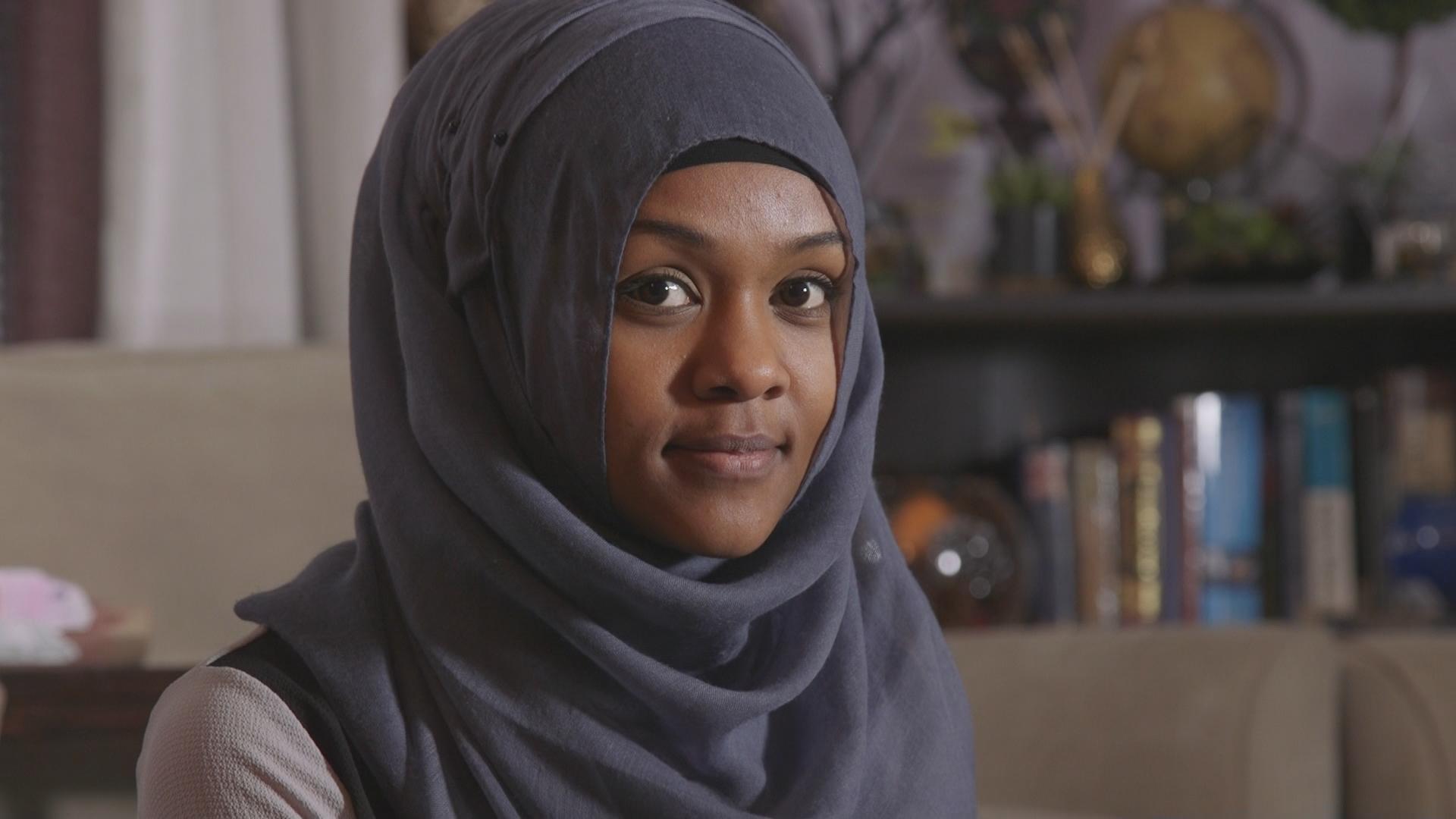
Juweria loves Buffalo and has embraced the city. She is diligently working to make the city a better place to live in for all of its residents.
“When I first came to the US, urban planning wasn't really my career path,” she says. “I'm now in the school of architecture and planning, so I pay attention to the built environment, I pay attention to people places, buildings, you name it. Here, you have a better chance of making an impact; you can see the turnaround. I feel like I’ve become part of those who are making the change.”
“Honestly Buffalo is probably the first home that I've felt,” she says. “I'm so invested in the people here, I guess maybe it's my urban planning perspective, I love helping and supporting and being service to people and that means being part of them and letting them know that I'm here to stay. I am a Buffalo girl and I consider myself a Buffalonian. I want to contribute to Buffalo, because it's my home. If I see a challenge in Buffalo, I want to be at the forefront, shoulder to shoulder supporting the work, the contribution, the effort to elevate people, to then be part of that change.”
Juweria became an US citizen last February. “Now that I am a citizen, I am an American by law. I can fully now be a part of the voting process. I can now have a say which really matters to me,” she says.
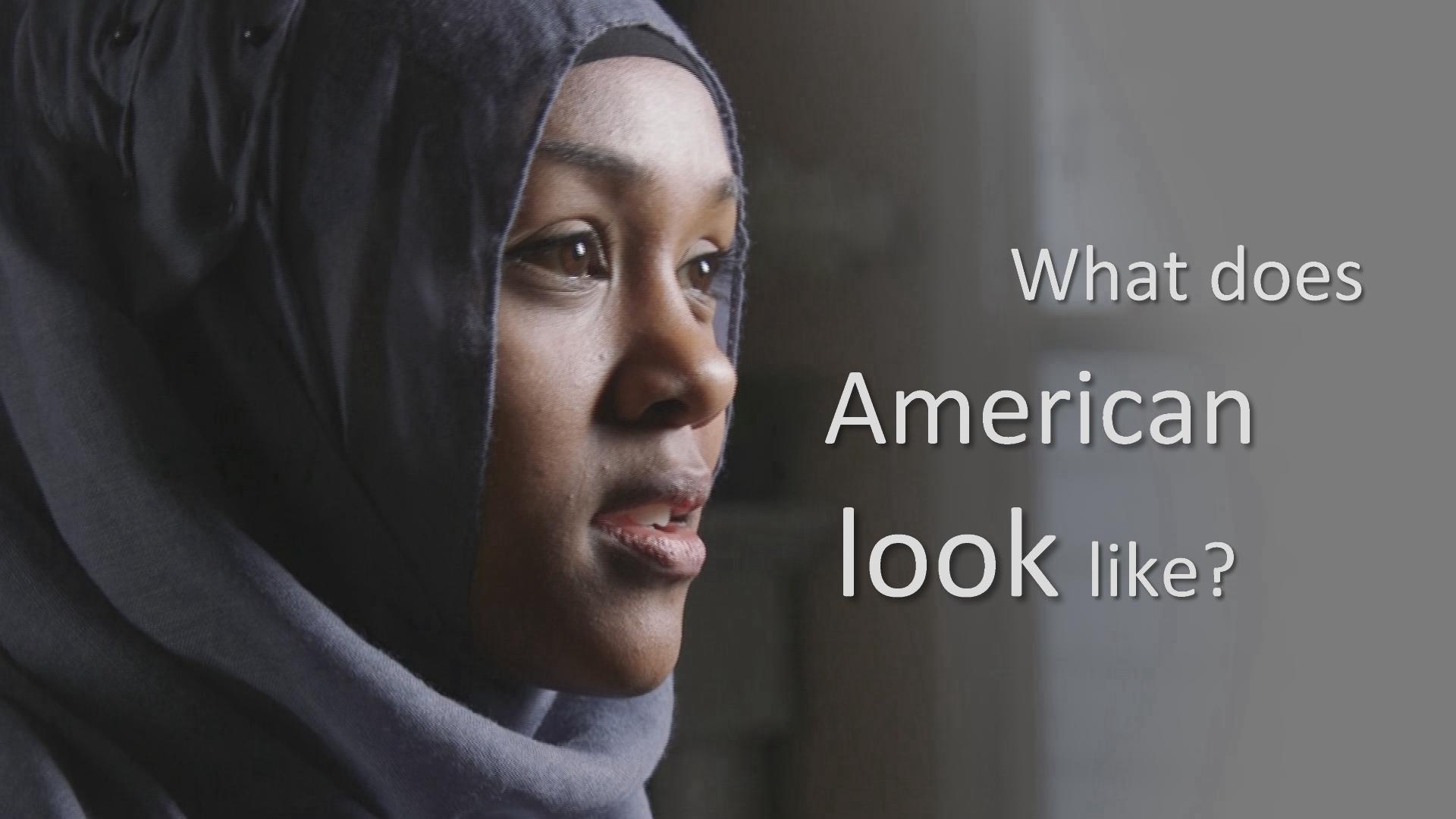
“I have a conflict in my mind because there's the good and there's the bad. And I'll explain that because the good for me is, when I think of the United States, I see opportunity, the anthem is revolved around freedom, unity. And then sometimes on the ground, it's well who gets to be American and what does American look like?”
“For me as an East African Muslim person, religion and culture is also very intertwined, so my faith is pretty much the first priority for me. For me it's my religion but it's also my identity, so when you Juweria, you also see a picture of Juweria with a hijab, with a head scarf. Just being visibly different, embracing that and then saying I'm a black Muslim woman, I think it's very powerful. I enjoy that, but also it makes me very different and sometimes leads to uncomfortable conversations.”
Sometimes when people first encounter Juweria and hear that she was born in Somalia they assume she is a refugee who recently resettled in Buffalo and may struggle with English.
“When I mention that I work in City Hall, sometimes by default people assume I work in the New American office. The reason why they're asking that question is because they're looking at me and saying, maybe that's where you also work, because you're probably a new American,” says Juweria.
People are often surprised to learn that she is an immigrant from the UK, speaks four languages and will soon hold a master’s degree.
“You can pretty much write a story about me without even talking to me. And then I'll probably have to do a lot of crosses and say, ‘nope, that's not true, and this is not true, and in fact this is definitely not true," she says. So there are different layers, and those are things that we won't know based on just looking at the image of the person. I think I do break those specific stereotypes that people hold. I can wear the identity of being a black woman, identity of being a young mom, just a Muslim woman, a woman who's educated, a woman who's kind of figuring out life for her own and creating her own identity, all those on different things. In Buffalo, if you meet an immigrant or refugee, it's likely they have come through the resettlement process, but then there's also other people like me who've come here by choice, who've come here because maybe they found love or maybe there's better opportunity or maybe they feel like they have a specific skill set that they can contribute."

Making Buffalo Home is a two-year, in-depth Buffalo Toronto Public Media engagement initiative to inform and raise awareness of immigration for our entire community. The project aims to help the region develop a better understanding of the shared opportunities and challenges we face together as long-time residents and new immigrants and refugees.
Making Buffalo Home is funded by Rich Products Corporation and Rich Family Foundation.
